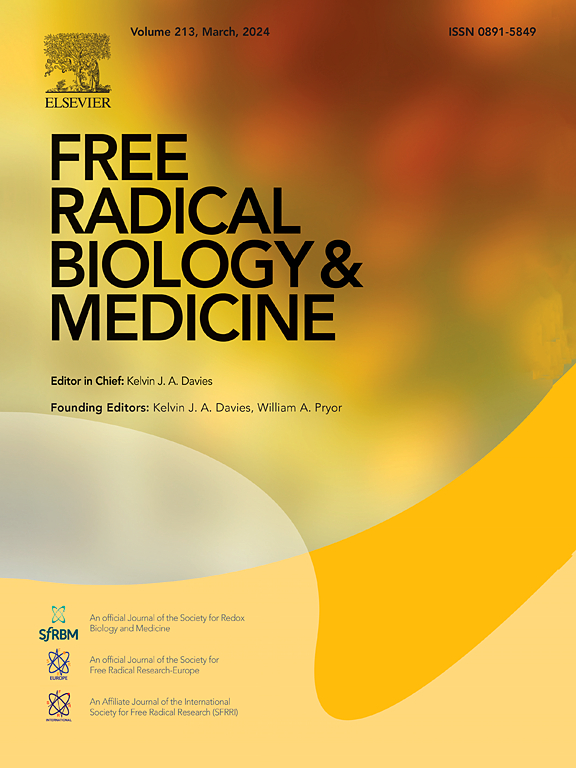Skin sensitizers enhance superoxide formation by polycyclic aromatic hydrocarbons via the aldo-keto reductase pathway
IF 7.1
2区 生物学
Q1 BIOCHEMISTRY & MOLECULAR BIOLOGY
引用次数: 0
Abstract
Exposure to combustion-derived airborne polycyclic aromatic hydrocarbons (PAHs) may harm human skin, exacerbate cutaneous inflammatory diseases and accelerate skin aging. The toxicity of PAHs is unleashed upon their metabolic activation by cytochrome P450 (CYP) 1 monooxygenases, resulting in the formation of reactive intermediates that form mutagenic DNA adducts. Moreover, PAHs cause oxidative stress, which is primarily due to aldo-keto reductases (AKRs), such as AKR1C3, which convert CYP1-derived PAH-trans-diols to PAH-catechols. The catechols undergo autooxidation leading to the formation of reactive oxygen species (ROS) and PAH-quinones. The latter are highly reactive, mitotoxic and are reduced back to PAH-catechols, thus facilitating redox cycling. As AKR1C expression is inducible by other NRF2-stimulating chemicals, we tested the hypothesis that co-exposure of HaCaT keratinocytes to skin sensitizers and the PAH benzo[a]pyrene (BaP) enhances ROS formation. We observed a synergistic effect of the skin sensitizers on the BaP-induced expression of the NRF2 target genes heme oxygenase-1, sulfiredoxin-1 and AKR1C3. In fact, co-exposure to the skin sensitizers also enhanced the BaP-induced formation of superoxide anions. Intriguingly, the co-exposure-related ROS formation was abolished upon inhibition of either CYP1A1 or AKR1C3. Testing of additional skin-sensitizing compounds, differing in their mode of action, indicated that especially potent Michael acceptors enhance the toxicity of BaP by increasing AKR1C3 expression and, presumably, downstream BaP-quinone formation. Our study reveals potential health risks associated with the simultaneous exposure to common skin-sensitizing substances and ubiquitous PAHs, and implies a role for NRF2 in mediating PAH toxicity.

求助全文
约1分钟内获得全文
求助全文
来源期刊

Free Radical Biology and Medicine
医学-内分泌学与代谢
CiteScore
14.00
自引率
4.10%
发文量
850
审稿时长
22 days
期刊介绍:
Free Radical Biology and Medicine is a leading journal in the field of redox biology, which is the study of the role of reactive oxygen species (ROS) and other oxidizing agents in biological systems. The journal serves as a premier forum for publishing innovative and groundbreaking research that explores the redox biology of health and disease, covering a wide range of topics and disciplines. Free Radical Biology and Medicine also commissions Special Issues that highlight recent advances in both basic and clinical research, with a particular emphasis on the mechanisms underlying altered metabolism and redox signaling. These Special Issues aim to provide a focused platform for the latest research in the field, fostering collaboration and knowledge exchange among researchers and clinicians.
 求助内容:
求助内容: 应助结果提醒方式:
应助结果提醒方式:


